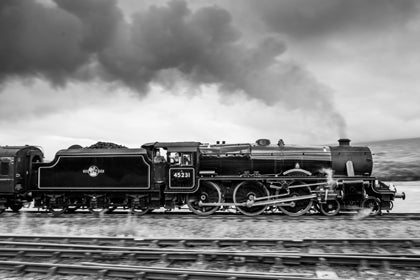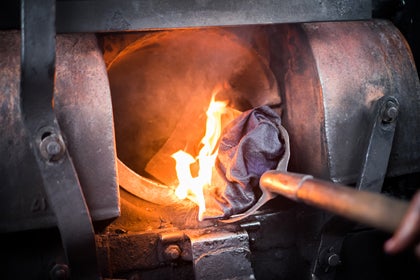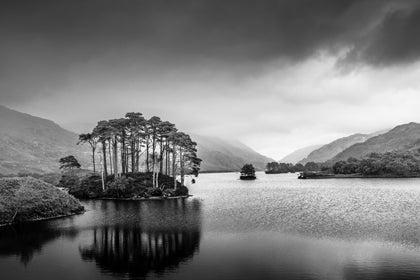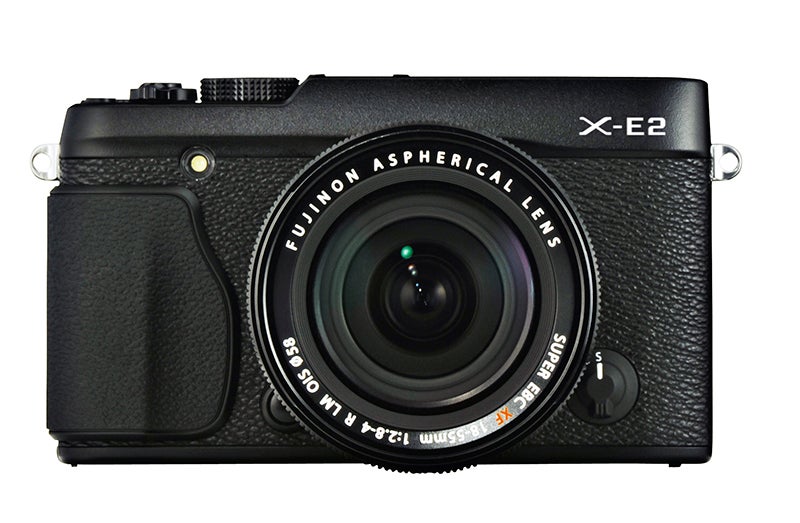
At a Glance:
16.3-million-pixel, APS-C sized X-Trans CMOS II sensor
Fujifilm X-mount
ISO 200-6400 (extendable to ISO 100-25,600)
7fps Continuous Shooting
0.5in, 2,360k-dot OLED viewfinder with dioptre control
3.0-inch, 1,040k-dot fixed LCD screen (3:2 aspect)
129×74.9×37.2mm
350g (body only)
It’s late on a Friday, I’m sipping a pint and watching the world go by outside Euston station before boarding my overnight sleeper bound for the North. While many people in their late twenties might be glancing up at a holiday destination boards for a trip to the sun, I’m destined for somewhere hundreds of miles away that’s notorious for its gloomy weather – Fort William in the Scottish Highlands.
It’s at this point you may have guessed I’m not one for lounging on a beach – I’m the outdoorsy type, but my suitcase isn’t laden with walking boots, waterproofs or maps to explore the mountainous terrain Scotland has to offer.
Instead my bags are taken up by overalls, steel-toe cap boots and face scrub – the main essentials I need for a week away volunteering on the support crew of a steam locomotive that runs along the famous branch of the West Highland line that passes over Glenfinnan viaduct, a location made famous by the Harry Potter films.
While it might not be everyone’s idea of a holiday, it’s my way of escaping city life for a more rural place where I can retreat to photograph one of the most scenic railways in the world, right from where all the action happens.
Fujifilm X-E2 field test sample image gallery
Kit decision
Before leaving the office and heading North I had a tough decision to make. What camera should I take? Usually my shoulders take the weight of a Canon 5D Mark III and a range of L-series lenses to cover every eventuality, but I’m wise to the fact that a smaller system will not only allow me to travel lighter, it’ll allow me to pack more day-to-day essentials and give me the option to swap my enormous backpack for a more friendly shoulder bag.
A rummage through my draws beside my desk presents a Fujifilm X-E2 – a camera I’ve been meaning to send back since reviewing it earlier in the year. With a fine selection of XF lenses to choose from in the stock cupboard, my decision is made, the Fujifilm X-E2 it is. It’s time to give my DSLR, and my shoulders, a well-earned rest.
The next day and on my arrival at the Fort William depot where the locomotives are maintained and stabled I spot my first photo opportunity – to capture the special moment of the fire being lit as the engine is brought to life.
Fujifilm X-E2 field test sample image gallery
Design observations
Dumping my suitcase and quickly attaching the Fujinon 35mm f/1.4 R lens to the front of the X-E2 gains quite a lot of interest from the engineers around me who start to make observations and ask a series of questions.
It looks like a Leica. Does it take film? What does it cost? After answering these questions and handing it round, I explain the direction Fujifilm is heading with its X-series and the way their attractive digital rangefinder-style bodies, supported by a wide range of lenses, are appealing to the type of photographer who wants a smaller, lighter and more convenient system to that of wielding around a heavy DSLR.
‘I can see the appeal’ one engineer says, ‘it’s a fraction of the weight of my Canon EOS 7D‘ says another.
The interest in the X-E2’s aesthetics and design from the relatively short time its been in my hands suggests it’s something of a status symbol, with its retro-nostalgic silver and black finish making it to stand out from other mirrorless models.
As it’s passed back I find a clean rag to wipe off the oily marks that cover the handgrip. I knew from the very start of the trip the camera might encounter some tough conditions, one of the reasons I was somewhat hesitant to take a non-weather sealed camera over my fully weather sealed DSLR, but I certainly didn’t expect to find myself wiping grease from it within ten minutes of arriving.
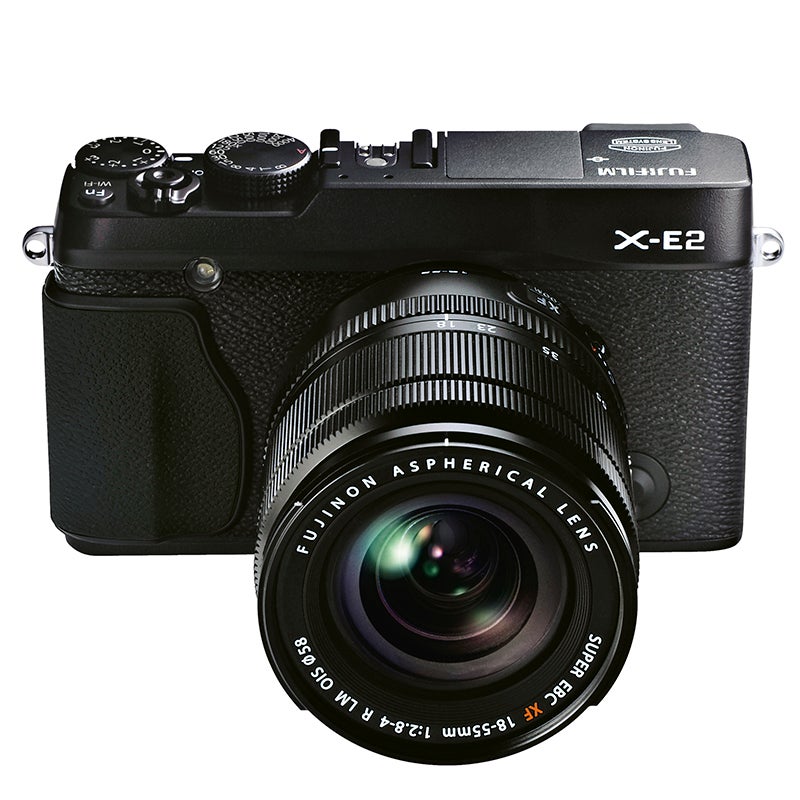
Imaging capabilities
Early next day I set aside some time to concentrate on photographing some finer details to remind myself of what the X-E2’s 16.3-million-pixel APS-C sized X-Trans sensor is truly capable of.
As I carry the camera over my shoulder and climb aboard the engine, the camera body takes an accidental knock against a handrail and I’m thankful for the cameras magnesium die-cast front cover that’s prevented it from any damage.
Though in some areas, such as its buttons and scroll dial at the rear, it feels less refined than the DSLR I’m used to using, the body has a super solid and robust feel. The way the On/Off switch and top plate dials fall to hand is also testimony to its excellent design.
As I swap from the 18-55mm kit lens over to the new Fujinon 56mm f/1.2 R XF, it instantly makes the X-E2 a heavier camera, however it remains considerably smaller and 620g lighter than my DSLR with my 85mm lens attached.
Changing lenses also raises the issue of how to keep the sensor free from dust and dirt in the inappropriate conditions I’m going to be using it all week. There’s little more I can do than take the usual precautionary methods of interchanging lenses with the body pointed face down and ensure the X-E2’s inbuilt sensor cleaning is turned on as the camera is powered up as well as when it’s switched off.
As the engineers go about their business of oiling, cleaning and examining the engine before we set off, I experiment by opening the lens to its maximum aperture, while keeping the shutter speed dial on the top plate set in it’s A position so I’m shooting in Aperture Priority mode.
The immediate drop off in focus at f/1.2 with this lens creates a wonderful depth of field that’s ideal for isolating a subject from its surroundings to help draw the viewer’s eye to the heart of the image. It’s also at this moment I start to appreciate the speed at which the X-E2 focuses. It locks on in a fraction of a second (0.08secs to be precise) and remains just as accurate when the AF point is moved off centre to one of its other 49 AF points.
Challenging conditions
Prior to the whistle being blown and our departure from the station I climb back onto the engine slightly anxious of how well the camera will perform in such a demanding environment.
There’s a raging hot fire, the heat is immense, there’s coal dust in the air and as if that isn’t enough the extreme contrast between the enclosed cab and light pouring in is going to be a real test for the 256-zone TTL metering system.
As we get underway I take start to take my first shots and quickly realise I’m able to cram in everything I can see before my eyes using the Fujinon 10-24mm f/4 R OIS XF lens. Even though I’m shooting wide-open (f/4) the fastest shutter speed I’m able to get at ISO 400 is 1/25sec – not fast enough to eliminate camera shake even with the optical image stabilisation system built-in to the lens employed.
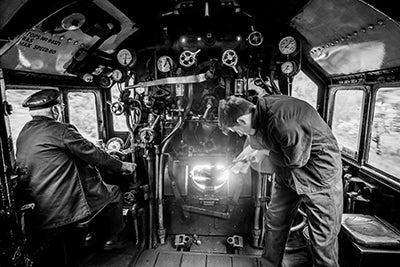 Fujifilm X-E2 field test sample image gallery
Fujifilm X-E2 field test sample image gallery
Safe in the knowledge that noise only becomes noticeable under close inspection at ISO 3200 and above, I increase the sensitivity to ISO 1600 using the quick menu button and scroll dial at the rear.
This takes some getting used to as scrolling to the right decreases the ISO value where I presumed it would increase it. As I continue to experiment with the ISO, the way the dial seems back to front in terms of its functionality frustrates me and instead I revert back to using the function button on the top plate as my means of changing ISO.
Now with a shutter speed of 1/100sec, I clamber into the coal space and shoot the fireman hard at work building up his fire for the stiff climbs ahead. This is an ideal time to put the X-E2’s impressive 7fps burst rate to good use and I’m quick to hit the drive button beside the screen, which also expands the camera’s motion panorama mode and advanced filters of which there are twelve to experiment.
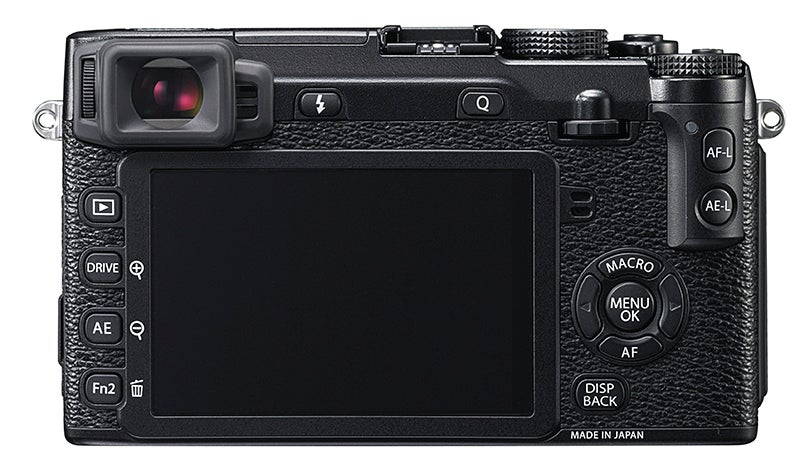
Impressive screen
A quick inspection of the images on the crisp 3.0in, 1,040k-dot screen reveals I’ve bagged the shot I was after and have been successful in creating some blur outside the cab to portray the sense of movement.
Although a camera not built for speed, it’s certainly by no means out of its depth in this department, recording 8 frames at 7fps before the buffer kicked in and prevented any more being taken. In hindsight I could have switched over to shooting in the Fine JPEG format, which would have resulted in me being able to rattle out 19 frames before the buffer interrupted, however Raw is always my preferred file format for shots I plan to edit later.
Zooming into the shots and viewing them at a magnified view reveals the sharpest and best-composed frame of the eight is going to require detail to be pulled back from the shadows – something I’ll do later back at the depot on my laptop using Lightroom.
As we continue onward to Mallaig, I take a few shots of the breathtaking landscape and use the Disp/Back button to view the histogram to check all is ok with exposure. On the rear display the bright sky looks to be losing detail, which is confirmed by glancing at the histogram and the highlight clipping warning flashing black on the small thumbnail view.
Dialing in between -2.3EV to -1.0EV using the exposure compensation dial that’s suitably positioned on the corner of the body helps to preserve the detail in the brightest highlights. The exposure compensation scale that’s displayed on the left of the screen also acts as reminder of what it’s set to when the eye is raised to the viewfinder.
Fujifilm X-E2 field test sample image gallery
Speed performance
As we gently roll along the side of Loch Eilt, the fireman taps me on the shoulder and tells me there’s an excellent split-second photo opportunity coming up to photograph the famous island of Eilean na Moine covered in Caledonian pine trees. Now out of continuous shooting mode I don’t dare risk setting it back for the fear of missing the shot.
As the trees along the trackside begin to clear I get my half second opening to get the shot before the view is obscured once again. ‘Did you get it’ the fireman shouts across. A quick glance down at the screen reveals I did and I’m grateful to the EXR processor II, which contributes to the X-E2’s impressive response performance, with a shutter lag of just 0.05 seconds.
Back at the depot, I finish the day capturing some detailed shots of the valve gear as it glistens in the late evening sun before taking the opportunity to cycle through my set of images quickly using the rear scroll dial and protecting my favorites from the playback menu.
It’s at this point I’m missing the star rating function from my DSLR but the Wi-fi functionality more than makes up for it, which I put to good use once more to transfer a few of my best shots over to my iPhone before tagging and sharing them to my friends through Facebook.
Day one complete, I’ve been impressed by the way the X-E2 has survived the harsh conditions in which its been used and the images its produced.
Fujifilm X-E2 field test sample image gallery
Extended use
As the week goes on, the weather improves and I’m now feeling right at home using the X-E2 and put it to good use to exhaust all my photo opportunities.
In high-contrast conditions I find myself using the excellent electronic viewfinder not only to compose images, but also review them, however this does reveal a fraction of a second delay as detail renders between frames.
Setting the aperture via the aperture ring on the lens and the shutter speed via the beautifully milled top plate dial is a very satisfying experience and though it’s slightly different to operating a DSLR, I find the manual control more rewarding as it feels you’re more at one with the camera.
By the end of the week I think about my decision to take the X-E2 on my travels and I have no regrets whatsoever. Not only has it allowed me to take the shots I would have taken with my DSLR, it’s been a pure joy to use throughout the trip.
As I board my sleeper for home and review my images for one last time, the thought crosses my mind as to how cheaply I could pick one up for. With body-only prices now under the £600 mark for the first time, it’s fair to say I’m very tempted.





